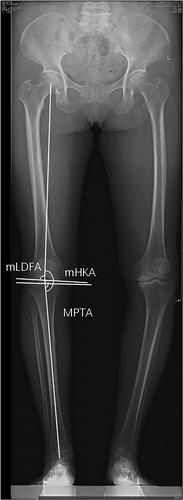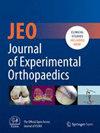Restoring prearthritic alignment improves joint perception in medial unicompartmental knee arthroplasty
Abstract
Purpose
This study aims to investigate whether restoring prearthritic alignment improves joint perception in medial unicompartmental knee arthroplasty (UKA).
Methods
This retrospective cohort study analysed 244 patients who underwent nonrobotic-assisted medial fixed-bearing UKA between 2015 and 2018 with a minimum 2-year follow-up. Patients were categorised into prearthritic and nonprearthritic alignment groups based on the difference between their postoperative alignment and prearthritic hip-knee-ankle angle. Postoperative outcomes, including the Forgotten Joint Score (FJS-12), Oxford Knee Score (OKS) and Western Ontario and McMaster Universities Osteoarthritis Index (WOMAC), Knee Injury and Osteoarthritis Outcome Score (KOOS), Oxford Knee Score (OKS) and University of California Los Angeles (UCLA) activity score were compared between the groups. Additional analysis was performed in a subgroup of patients with constitutional varus alignment (CPAK types I, IV and VII). Multivariable logistic regression was used to identify predictors of achieving a forgotten joint.
Results
Patients with restored prearthritic alignment had significantly higher FJS-12 (71.9 vs. 63.4, p = 0.005), OKS (40.7 vs. 38.1, p = 0.003) and WOMAC (91.2 vs. 88.1, p = 0.017) scores compared to those with nonprearthritic alignment. In the constitutional varus subgroup, prearthritic alignment was associated with higher FJS-12, UCLA, OKS and KOOS ADL scores. The prearthritic alignment group also had a higher likelihood of achieving the ‘forgotten joint’ state. A 1-degree deviation from prearthritic alignment was associated with a 21% decrease in the probability of achieving a forgotten joint.
Conclusion
Restoring prearthritic alignment in UKA is associated with improved postoperative joint perception and function, especially in patients with constitutional varus alignment. This personalised alignment approach may lead to better outcomes than the traditional goal of neutral alignment. Further research with a longer follow-up period is required to validate these findings and explore their impact on prosthesis survival.
Levels of Evidence
Level II.





 求助内容:
求助内容: 应助结果提醒方式:
应助结果提醒方式:


